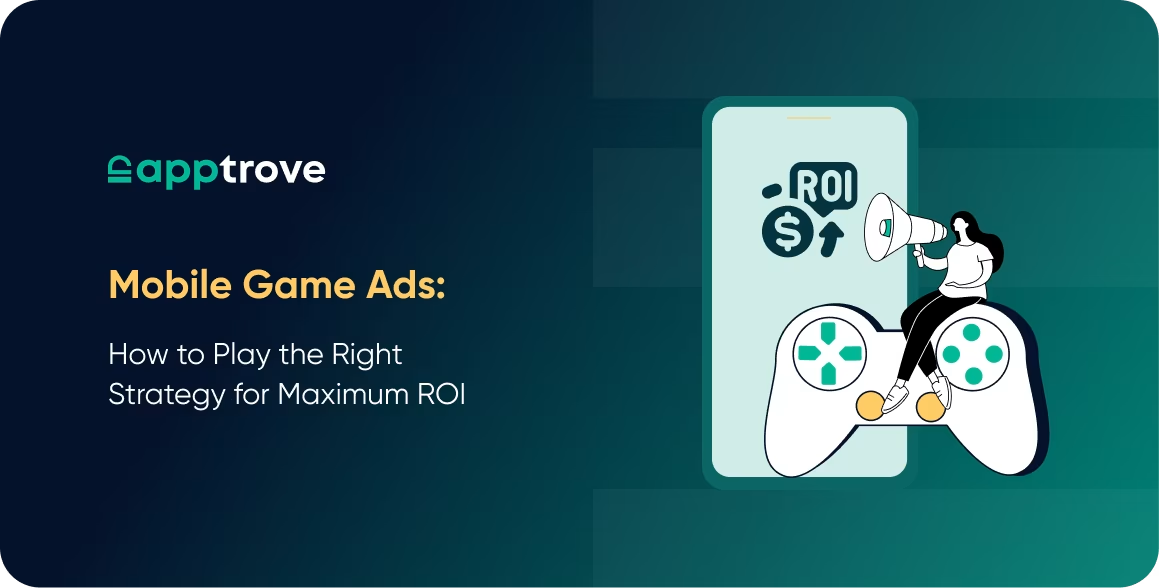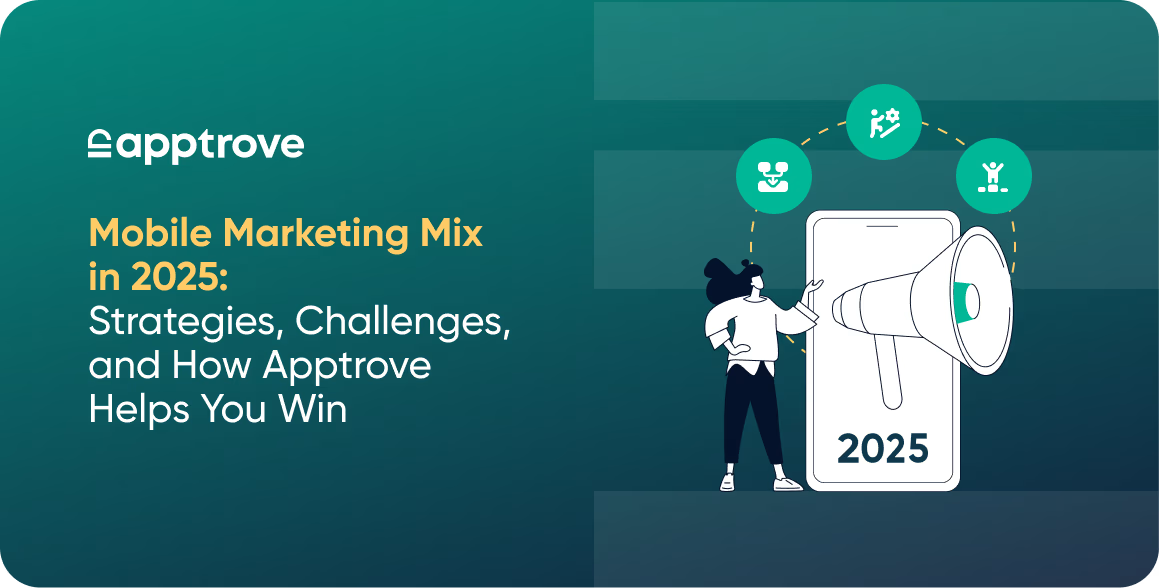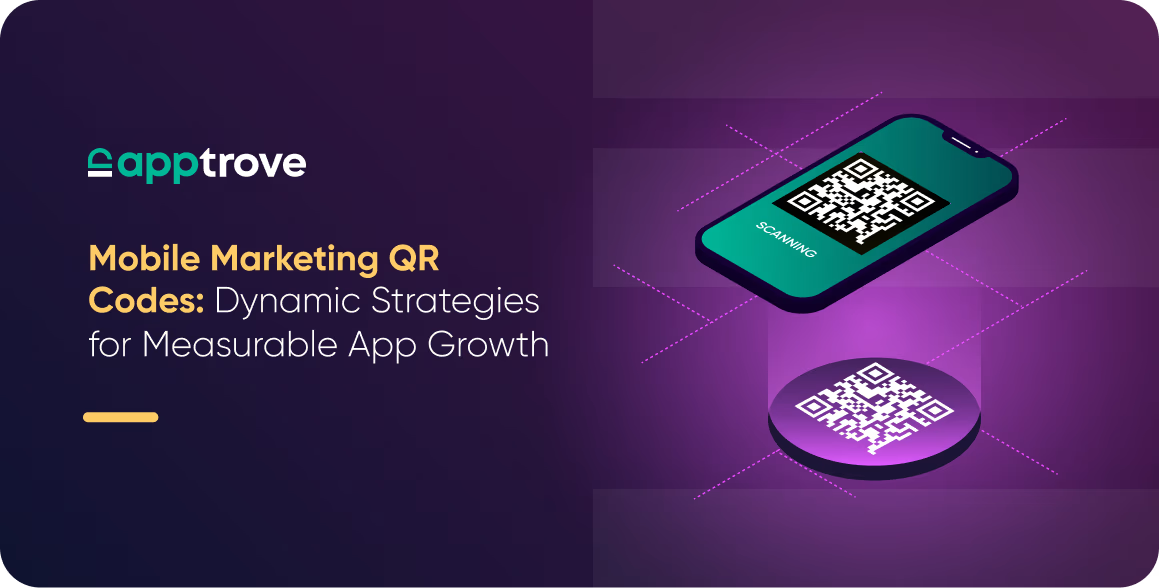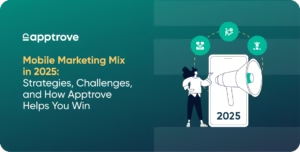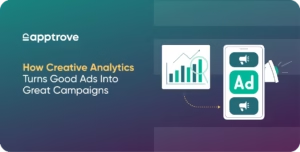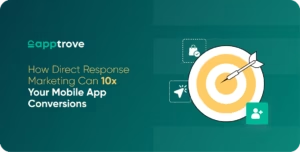Customer journeys today are anything but linear and predictable. It’s challenging to say which touchpoints are responsible for a conversion because of the involvement of multiple channels and touchpoints.
Fortunately, tools like Apptrove help marketers gain clearer insights into these complex journeys by tracking user interactions across channels and devices. Multi touch attribution offers credit to the marketing channels that influence customer conversion or the desired action, not just the first or last touchpoint.
How does MTA Work?
The multi touch attribution model algorithmically attributes credit to one or more touchpoints in the customer journey for a conversion. MTA tools use models that identify which touchpoints or channels have influenced the customer to take a desired action.
Consider this scenario.

In this case, a multi touch attribution model can help to determine the individual contribution of each touchpoint or channel involved in making the final decision.
Armed with this data, marketers get a clear picture of the customer journey and can use the insights to deliver better experiences. Further, they can optimize their marketing budget by spending on the most effective channels/ touchpoints.
Multi touch attribution can be of 2 types, depending on their level of sophistication.
Rule-based attribution is subjective and employs a set of predetermined rules to assign credit for conversions to different marketing touchpoints. It includes Linear, U-shaped, W-shaped, and Time decay.
On the other hand, algorithmic attribution is objective and uses ML, predictive analytics, and statistical modeling to credit the most influential touchpoints. It helps marketers predict outcomes and optimize future marketing campaigns.
This includes Markov Chains.
It is a mathematical framework comprising random variables transitioning from one state to another based on rules of probability. It is based on the principle of taking into account all touchpoints a customer has interacted with, thereby offering a holistic view of the buyer journey.
Multi Touch Attribution Models
Overall, four (+1) standard models are used in multi touch attribution, each offering different levels of insights into the customer journey. The fifth one is a custom model unique to your business needs.
Linear Multi Touch Attribution
This model offers the same credit to all those interactions involved in the lead conversion. It tells you what stages helped but not to what extent.
Thus, it doesn’t tell you the whole story but offers an overall understanding of the customer journey.
Who should use it?
This model is great for your business if your prospects are in the consideration phase of the customer journey for an extended period. It is also ideal if you wish to understand how the touchpoints work together to influence a deal.
Time-Decay Multi Touch Attribution
This model offers most of the conversion credit to interactions occurring closer to the event (conversion). Thus, it circles the bottom-of-the-funnel touchpoints but doesn’t completely ignore upper- and mid-funnel tactics (as in last-touch attribution).
Who should use it?
This attribution is ideal for businesses measuring the success of short-term touchpoints like campaigns.
U-Shape Multi Touch Attribution
This model offers most of the conversion credit to the first and last touchpoints (top- and bottom funnel). Thus, this model can show you which tactics are effective in kick-starting the customer journey and which ones are great for causing a conversion. There is less emphasis on the middle-funnel engagement tactics.
Who should use it?
This model is ideal if your team wants to focus on the impact of the first and last of the multiple touchpoints.
W-Shape Multi Touch Attribution
Most of the conversion credit is spread across the first, middle, and last touchpoints. This model is best for complex cross-channel marketing campaigns with multiple touchpoints.
Who should use it?
It is ideal to understand which touchpoints convert and identify the touchpoints that encourage customers to engage and move through the buyer journey.
Custom Multi-Touch Attribution
Businesses often need a custom multi touch attribution model that fits their use case because they need a different model above to work for them. Carving this model is complex and needs an in-depth understanding of various models and why they haven’t worked for you.For instance, in the case of mobile attribution, you will need to determine which campaigns, media partners, and channels have delivered app installs. In such cases, a mobile attribution partner can simplify the process of tracking a user from the first engagement to their last in-app purchase. The platform helps in tracking and analyzing mobile app user acquisition, engagement, and monetization.
Benefits and Challenges of Multi Touch Attribution
Multi touch attribution has become important for marketers, especially for those looking for a granular or person-level view rather than the traditional aggregate methods. However, MTA is a mixed bag with benefits and challenges. Let’s take a look at them.
Benefits
Offers Complete Visibility of the Customer Journey
One of the top benefits of multi touch attribution is that it breaks down the customer journey to offer visibility into the success of each touchpoint involved. This is critical in today’s digital age where customers increasingly avoid marketing messages.
MTA offers marketers the data they need to understand specific customer preferences and meet them on the right channel at the right time.
Offers Granular Data on the Elements of the Funnel
With multi touch attribution, you can zoom in on the various elements involved in the customer journey. Thus, you get accurate insights into the most pressing questions faced by marketers –
- How many touchpoints are involved in the conversions?
- On average, how long does it take for a lead to convert?
- When and where do specific audience groups convert?
- What is the average win rate for different types of campaigns?
- Allows Marketers to Achieve Higher ROI and ROAS
Multi touch attribution shows marketers where to spend the most and which non-contributing channels to ignore. This helps them optimize their spending and shorten the sales cycle by engaging customers with the most impactful messages.
Assists in Data-Driven Decisions
Data from multi touch attribution removes the bias in decision-making and helps marketers determine what’s working and what’s not. This allows them to optimize their resource allocation.
Challenges
Data Wrangling
Marketers need to employ multiple attribution models and correlate data to get accurate insights into the customer journey. This poses a challenge due to the sheer volume of data and complexity of the models. Using multiple attribution models adds to the complexity.
Limited Visibility into the Marketing Mix
Multi touch attribution works with web analytics to offer audience insights. However, it fails to share visibility into the other combination of tactics used in marketing to influence customer decisions.
For instance, it cannot evaluate the impact of dark social channels, word-of-mouth marketing, television advertising, print ads, offline promo events, and other offline touchpoints.
How Multi-Touch Attribution Compare with Other Attribution Models
Knowing how multi touch attribution compares with the leading attribution models makes it easier to understand the concept.
Multi-Touch Attribution Vs. Last-Touch Attribution
Last-touch attribution credits the last touchpoint of the journey for the conversion. But if we dig deeper, the last-touch model may sway the results in favor of some platforms like Google Ads, leading you to make incorrect optimization decisions.
What if you had a YouTube pre-roll ad campaign running alongside? And what if customers search for your product after viewing the video ad? Last-touch attribution will ignore the fact that your YT ad kicked off the customer journey.
Multi-Touch Attribution Vs. First-Touch Attribution
This model credits the first touchpoint of the journey to the conversion. It emphasizes how top-funnel efforts can lead to bottom-funnel conversions.
Taking the same example we shared earlier, the first-touch model will overemphasize the significance of the YouTube video ad and offer no credit to the paid search ad.
When to Use Multi-Touch Attribution
Multi touch attribution models should be used for campaigns based on digital spending. For instance, online paid advertising and email campaigns that run across devices and channels.
The reporting from the attribution model guides businesses to make smart decisions with their budget.
Implementation of Multi-Touch Attribution
Multi touch attribution is tough to set up because the modern customer hops across various devices, channels, and platforms to make a decision. Thus, tracking them can be tricky, especially with the rising privacy concerns.
Consider these steps to deploy the multi touch attribution model for effective results.
1. Define Goals
Setting a clear goal is critical to choosing the right attribution model. When setting the goal consider factors such as the length of the sales cycle and the type of campaigns you are planning to introduce.
Next, set KPIs by which you can measure the success of your campaign. Usually, marketers deploying MTA are looking to improve their user experience and ROI. The KPIs you decide on should reflect how these are impacted.
2. Collect Data
Firstly, you need to collect data on who is visiting your app, how they got there, and whether they are qualified leads.
There are two ways of doing this –
- Analytics Software
If your business lacks internal technological expertise, you can count on analytics software and integrations. A customer relationship management tool can help you collect customer data. A few tools like mobile measurement platforms have in-built attribution features. - JavaScript and On-Page Code
A JavaScript tracking code can be added to your app or website to collect data for attribution. This code tracks user behavior on the app like what pages they are viewing, what they’re clicking on, and where they’re coming from.
Most analytics software incorporate the JavaScript snippet but most companies leverage custom coding without the use of any software.
3. Measure the Performance and Derive Insights
Once you’ve gathered the data, it’s time to derive insights as to identify which touchpoints are most effective. Such data visualization is critical to identifying user behavior and trends in data that may not be obvious from raw data.
It is important to note that attribution isn’t a one-time exercise. It’s an ongoing process for optimizing marketing efforts and focusing on the most effective channels that lead to conversions. Marketers need to continuously experiment and refine the model to suit their needs and gain a better understanding of the customer journey.
Summing Up
Multi touch attribution when done right can help you boost the ROI on your marketing efforts. It effectively uncovers the touchpoints that have contributed to the conversion. Thus, you can optimize your marketing efforts and reduce unnecessary marketing spend.
A robust mobile measurement partner can help you with accurate attribution and marketing spend optimization. Count on Apptrove to level up your app marketing and propel your campaigns. Get in touch with our team or sign up for a free trial to experience Apptrove in action.
FAQs
How can businesses decide which multi-touch attribution model suits them best?
Choosing the right model depends on your sales cycle length, the complexity of your marketing channels, and your campaign goals. For example, if you want to understand the influence of early interactions, a U-Shape model may work well. Complex campaigns with many touchpoints might benefit from a W-Shape or custom model.
Can multi-touch attribution models adapt to changes in customer behavior over time?
Yes, the effectiveness of MTA models depends on continuous data analysis and refinement. As customer behaviors and marketing channels evolve, marketers need to update their models regularly to maintain accuracy and optimize results.
How do privacy regulations impact multi-touch attribution efforts?
Privacy laws and restrictions on tracking (like cookie limitations and device ID changes) can reduce the data available for attribution. This challenges marketers to find alternative data sources or rely on privacy-compliant analytics tools while maintaining effective attribution.
Are multi-touch attribution models useful for all types of businesses?
While MTA is particularly valuable for digital-first businesses with multiple customer touchpoints, businesses with simpler or offline-heavy customer journeys may find less benefit. In such cases, a hybrid approach combining digital attribution with traditional methods might be more effective.

